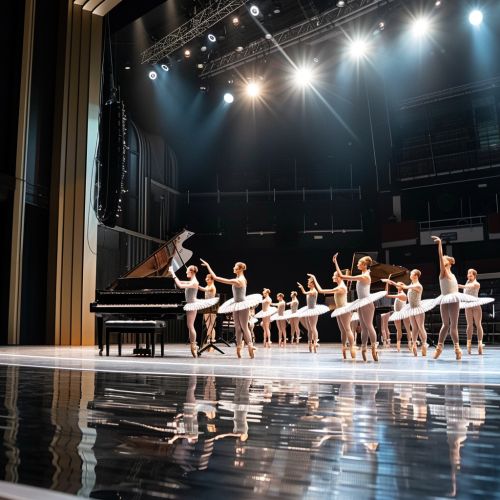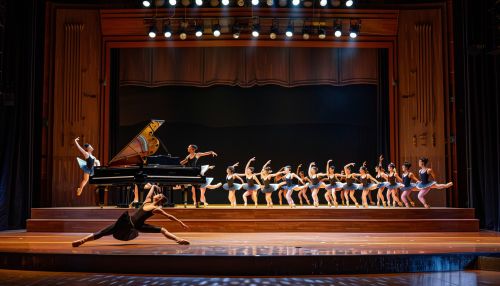Ballet company
Overview
A ballet company is a group of professional ballet dancers who perform classical, neoclassical, and contemporary ballet works. These companies are often accompanied by a live orchestra and perform in theatres with elaborate sets and costumes. The repertoire of a ballet company typically includes original works, revivals of historical ballets, and new productions of popular ballets.


History
The history of ballet companies traces back to the 15th century during the Italian Renaissance. The first ballet company, the Ballet Comique de la Reine, was established in France in 1581. The establishment of the Paris Opera Ballet in 1661 marked the beginning of professional ballet as we know it today.
Structure
A ballet company is typically structured into several ranks, each with its own responsibilities and roles. The ranks, from highest to lowest, are usually Principal Dancer, Soloist, Corps de Ballet, and Apprentice. Some companies also have a rank called Demi-Soloist, which is between Soloist and Corps de Ballet.
Repertoire
The repertoire of a ballet company can vary greatly depending on the artistic vision of the company's director. Some companies focus on classical ballets like Swan Lake and The Nutcracker, while others specialize in contemporary works by choreographers like George Balanchine and Jerome Robbins. Many companies also commission new works from emerging choreographers.
Training
Ballet dancers typically begin their training at a young age, often around the age of 8 or 9. They usually train at a ballet school affiliated with a professional ballet company, such as the School of American Ballet or the Royal Ballet School. Training includes classes in ballet technique, pointe work, partnering, and character dance.
Auditions
Auditions are a crucial part of a dancer's journey to joining a ballet company. Dancers typically audition for companies by attending open calls or company classes, or by submitting audition videos. The audition process can be highly competitive, with hundreds of dancers vying for a limited number of spots in a company.
Performances
Ballet companies typically have a performance season that runs from fall to spring, with a break during the summer. During the season, companies perform a variety of ballets, often presenting a new program every few weeks. Performances take place in theatres and are often accompanied by a live orchestra.
Touring
Many ballet companies tour nationally and internationally, bringing their performances to audiences around the world. Touring can be a challenging but rewarding experience for dancers, offering them the opportunity to perform in a variety of venues and to experience different cultures.
Funding
Ballet companies are typically funded through a combination of ticket sales, private donations, and government grants. Fundraising events, such as galas and benefit performances, are also a common source of revenue for ballet companies.
Challenges
Ballet companies face a number of challenges, including financial instability, injuries among dancers, and the need to constantly innovate while preserving the traditions of ballet. Additionally, companies must navigate the complexities of international touring, including visa issues and cultural differences.
Impact
Ballet companies play a crucial role in the cultural landscape, contributing to the preservation and evolution of the art form of ballet. They provide employment for dancers, choreographers, and other arts professionals, and offer audiences the opportunity to experience the beauty and athleticism of ballet.
